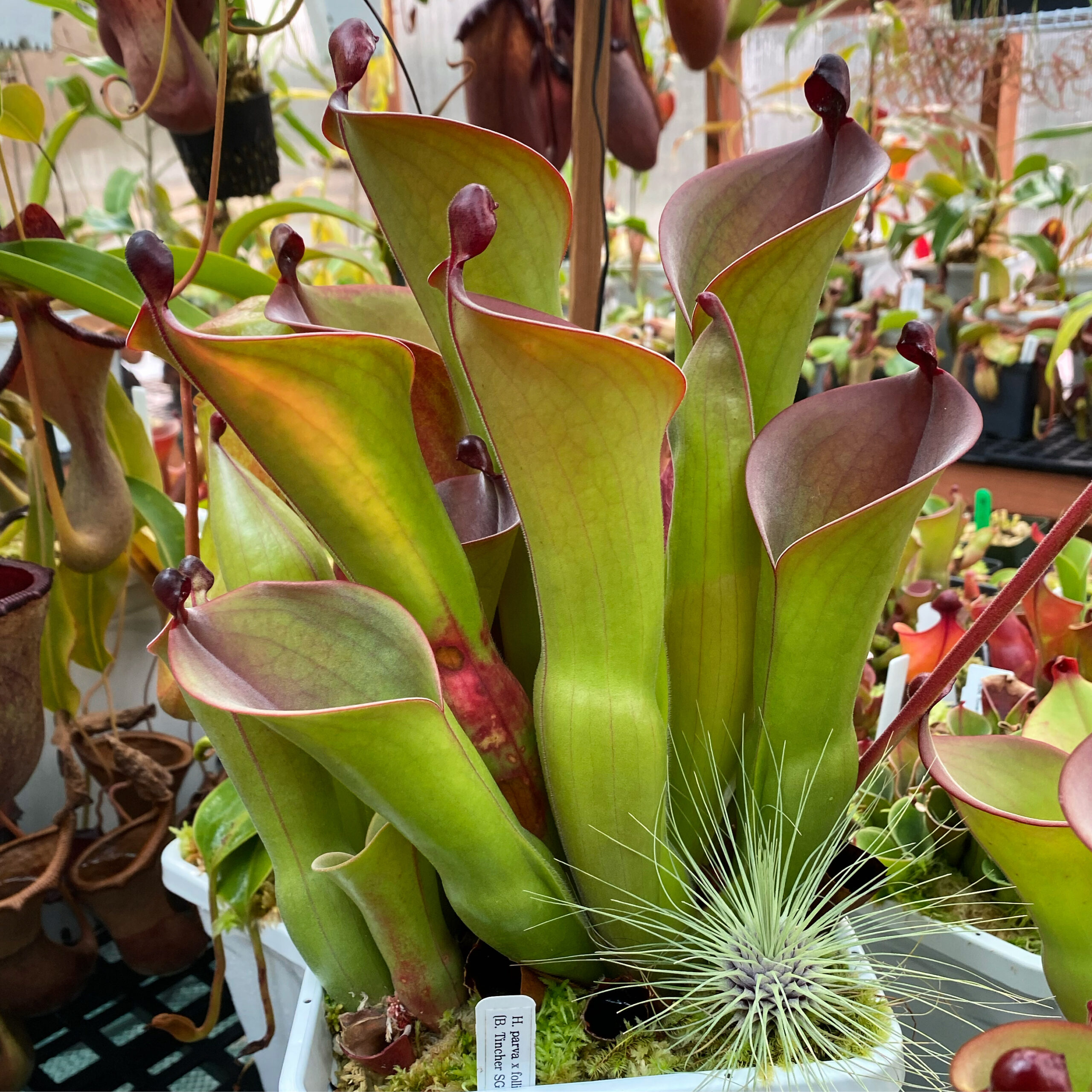Heliamphora

DescriptionHeliamphora
Heliamphora are tropical pitcher plants found in South America. They have a modified leaf that forms tubular pitchers. Heliamphora attracts, traps, and kills insects in the liquid that fills the pitcher. Most heliamphora have a symbiotic relationship with a bacteria that produces the enzymes to digest their prey.
Each pitcher has a nectar spoon that secretes a nectar-like substance that attracts insects and small plants. Each pitcher also has a small slit on the side that allows excess liquid to drain away without losing the content inside the pitchers. Many species of Heliamphora have downward pointing hairs that cover the inner surface of the pitchers. This forces insects into the lower part of the pitchers. Like other carnivorous plants, the additional nutrients from these insects supplements the nutrient poor habitats they have evolved in.
Potting Media
Potting Media
Heliamphora like airy and moist potting media. A popular substrate base is New Zealand sphagnum moss but some people have had success in other types of media like fluval. Perlite and/or orchid bark can be added to keep the moss airy as it breaks down over time. We recommend a 60:40 sphagnum to perlite ratio but they can be successfully grown in pure moss depending on your watering schedule and how often you plan on repotting. Avoid any media with fertilizers such as MiracleGro. Make sure your pot has drainage holes!
Grow Guide
Grow Guide
All Heliamphora enjoy high humidity and air circulation with bright indirect light. They do not like to dry out but they do not like sitting in water like bog plants. If Heliamphora are kept in deep water for extended periods of time they can develop root rot and decline. Like all other carnivores, Heliamphora appreciate clean water that is low in total dissolved solids (TDS). Depending on where you live, this can be straight from the tap or filtered through a DI or similar system. Heliamphora have evolved with a small slit along each pitcher which prevents overflow from rain. Heliamphora can be watered from above as excess liquid from each pitcher will flow into the media.
Heliamphora live at high elevations and experience temperature drops during the night. These types of plants appreciate day temperatures in the 70-80s and a nighttime temperature drop of about 10-20 degrees. We recommend not keeping your Heliamphora at temperatures above 85 degrees for an extended amount of time. At these temperatures, the symbiotic bacteria will die and the pitchers will wilt causing your plant to decline. We recommend giving your Heliamphora 65 degree nighttime temperatures at a minimum. These are found in the tropics and do not go through a dormancy period.
Note – These are generalizations and some species and hybrids can be acclimated to intermediate or windowsill conditions. It is important to monitor your plants as they acclimate to your growing conditions.
Acclimation Tips
Acclimation Tips
Most plants will arrive unpotted with the root ball intact in potting media. Unwarp the plant carefully from the bag and find a suitable pot for it to live in. Heliamphora pitchers can be very fragile and brittle so some pitchers may break in transit. We recommend not disturbing the roots and media as much as possible. Instead, just wrap more media as needed to fit the desired pot. All plants are coming from an intermediate/highland tropical greenhouse environment where the humidity is constantly over 70%. Many plants, especially hybrids, can be acclimated to household and windowsill conditions. If your humidity is low, you can put a bag over the plant as it acclimates. Alternatively, you can keep a shallow tray of water (similar to orchids) to increase localized humidity. Just make sure you are not keeping your Heliamphora in deep standing water. Once your Heliamphora is potted into its new home, water from the top to fill each pitcher. Excess water from the pitchers will drain into the media. Old pitchers and leaves can be cut off with scissors.